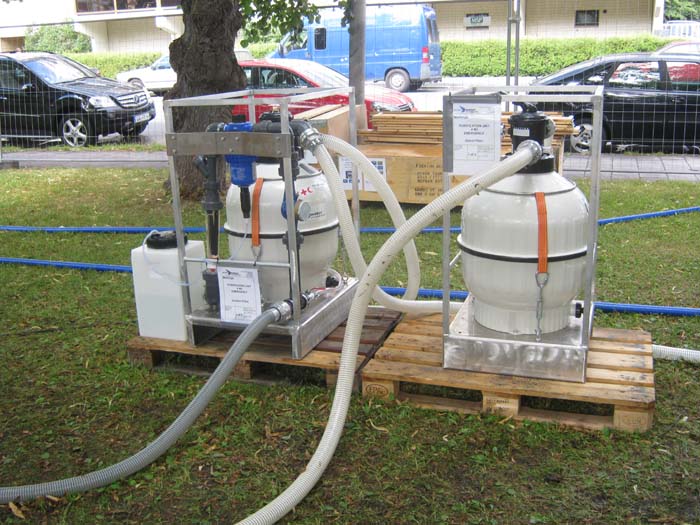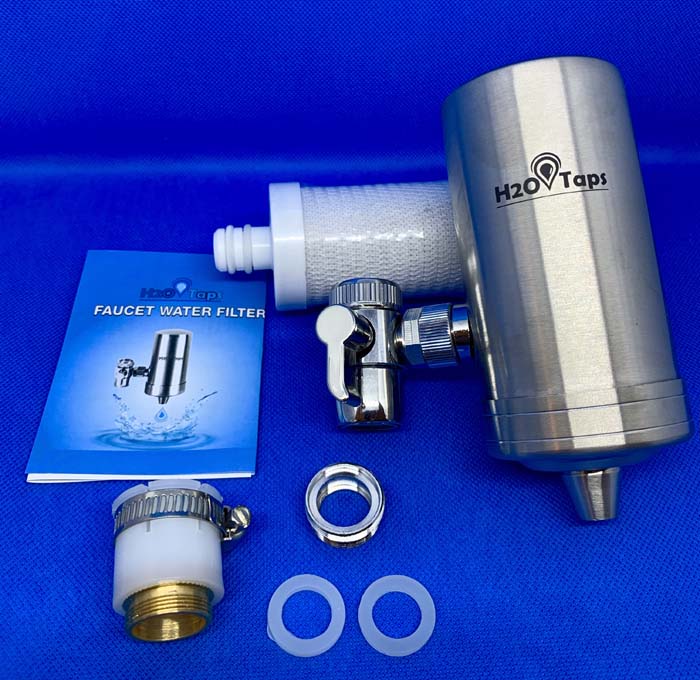
To ensure that you have access to clean and nutritious drinking water, it is essential to have a solid understanding of the various options available to you. Although bottled water and other filtering technologies can be expensive, many inexpensive DIY options can help you filter water at home. This will ensure that it is free from pollutants.
DIY water filter methods
Environmental factors, financial constraints, and the desired labor level influence the best water filter method. Many homeware and hardware stores sell small water filters for the house, many of which are kitchen faucet-attached canister filters.
Depending on your specific filtering requirements, you can select from a range of filtration cartridges that some offer. You can also purify, disinfect, and filter water using various do-it-yourself techniques. These could be useful in situations where more traditional methods aren’t available.
Here are some popular do-it-yourself approaches to help you filter water at home.
Activated charcoal
This method has the ability to absorb and retain harmful substances, odors, and bacteria. Additionally, it can decrease heavy metals and fluoride. On the other hand, it seems ineffective in eliminating hard water minerals, viruses, and bacteria. Charcoal may be easily used by placing it in a cloth bag or sock and pouring water through it.
Drops and tablets
The following are examples of commonly used drops and tablets you can use to filter water at home:
- chlorine dioxide
- tetraglycine hydroperiodide
- iodine
- sodium dichloroisocyanurate
To use, add the pills to the water and let them sit for the recommended amount of time to purify them, as instructed on the packaging.
DIY portable sediment filters
You can create a homemade water filter by combining activated carbon, play sand, and pebbles in a bucket with a hole and piping to allow water to flow through it. This will remove debris and odors from the water.
Fruit peel filters
In rural areas where people drink polluted water, they occasionally use apple or other fruit peels to filter it. This process is similar to a do-it-yourself water filter.
Boiling
To make water safe to drink, bring it to a boil for one minute.
UV treatment
Here, you let the sun’s UV rays pass through the water. This kills microbes, viruses, bacteria, and other microbes by damaging their DNA, thereby cleaning the water.
The sun treatment process can be accelerated by adding lime juice.
Travel-size sediment filters
These filters can purge water from any harmful microorganisms.
Here are the different forms they can take:
- A filtering water pitcher
- Squeezable pouch filters
- A filtering water bottle or straw
- A hand pump machine
What are the benefits of filtered water?
Purified water is water without any harmful substances. There are a few significant advantages to purifying your water at home:
Safer for drinking
Depending on your filter, bacteria, lead, sediment, fluoride, and iron can be removed, while no filter system can remove all pollutants.
 Superior in taste and clarity: It is often believed that filtering water improves its appearance and taste by removing chlorine and minerals.
Superior in taste and clarity: It is often believed that filtering water improves its appearance and taste by removing chlorine and minerals.
Efficiency of each DIY method
Your selected method’s effectiveness and intended use will determine the water filtration benefits.
For instance, the following are some of the capabilities of specific filtering methods:
- Improve odor and taste
- Get rid of chemical pollutants.
- Remove hazardous pathogens and germs
- Heavy metal removal
- Remove physical particles and debris
The effectiveness of the many do-it-yourself water filtering systems varies. While some may work better, most will need more time to offer these filtration options.
Boiling water, ultraviolet light, chlorine, iodine, and other disinfectant tablets can kill some bacteria.
But they are unable to remove:
- chlorine
- Lead and other heavy metals
- Chemical pollutants, such as herbicides
In addition, UV treatment kills Cryptosporidium and Giardia parasites, whereas chlorine and iodine tablets do not. Activated charcoal can absorb organic pollutants like pesticides and some heavy metals. But it doesn’t effectively eliminate germs.
Your best choice for filtering debris from water is a physical filter, whether a portable one you bought at the store or one you make yourself out of layers of silt. Physical filters and activated charcoal are the most effective ways to enhance water’s appearance, taste, or odor.
Are cotton balls good for filtering water?
The additional filter layers can’t fall into the water if the cotton ball layer is there to catch them. The cotton swaths in the filter catch the dirtiest, biggest particles as the water flows through.
The most natural material for a water filter
If pollutants are present in the water you drink, you and your loved ones could be in danger. These include poisonous metals or germs that cause diseases in solution. On the other hand, non-toxic pollutants can affect the taste of water. Modern methods to help you filter water use a variety of natural materials. This is to help eliminate possible pollutants and provide you with safer and tastier water.
Sand
It can be made from a variety of natural substances, including wood and peat moss. Rinsing sand allows it to retain insoluble minerals, making it recyclable. Nevertheless, sand is mostly used to remove minerals, such as iron and manganese, which impact water flavor and cause mineral stains.
Activated carbon (carbon)
Activated carbon is a popular choice among those looking for natural ways to filter water. It uses adsorption to filter out viruses, metals, nitrates, VOCs, bacteria, hydrogen sulfide, and pesticides. Carbon bonds to contaminants in the water and draws them out.
Diatomaceous Earth (DE)
Crumpled siliceous rock, or DE, is what we call it. Its extremely tiny texture, when used in layers, aids in the removal of bigger contaminants, such as algae and viruses. This is why DE water filters are common in pools and other recreational areas.
Ceramic
These are made from natural clay and are gentle yet efficient water filters. Contaminated water is forced through the ceramic, which then absorbs contaminants such as bacteria and arsenic. The filters are widely used in underdeveloped nations since they are inexpensive to build.
Does charcoal purify water?
Water undergoes a series of filters before reaching your sink. Still, your drinking water could be contaminated with unwanted remnants, additives, and microscopic debris. A charcoal water filter is a great example of an effective way to filter water at home.
Advantages of using charcoal
- Removing chlorine and unpleasant smells improves the water’s taste. Although we can’t drink chlorine since it’s a disinfectant, it’s essential for keeping our water supply clean.
- It is quite cheap.
- It requires little upkeep; every twelve months, change the filter.
Tips you can use to filter water
You can enhance your health and enjoy better-tasting water with a home water filter. Here are a few things to keep in mind when you filter water at home:
- Have a plumber install an under-the-sink unit or a whole-house filtration system to ensure the connection is done correctly.
- If your water is hard, smells bad, or contains too many pollutants, whole-house filtration is the solution.
- Moreover, it is possible to combine two different approaches to water filtering. After using a do-it-yourself water sieve or filter, activated charcoal, boiling, or ultraviolet light treatment can be used. This would help remove microscopic pollutants and physical debris.
- Whether you want filtered water for drinking or your bathtub, it’s important to consider your water purification goals.
- It is important to determine the filtering strategy best suited to your needs. For example, investing in a travel filter could be wiser if you go on longer hikes. You can use it more than once rather than depending on a do-it-yourself filter.
- If you’re on a tight budget, a tap attachment or refrigerator water filter is a good point-of-use filtration system to consider.
- If you notice black specks in your water or if the filter in your water pitcher, tap, or refrigerator needs replacing, you should do so routinely. Even though these tiny bits of charcoal aren’t dangerous, they indicate that your filter needs changing.
Conclusion
You can filter water at home using a number of do-it-yourself (DIY) options, in addition to using a store-bought filter or buying prefiltered water. Weigh your objectives to choose the best course of action. Specific procedures for physical debris and particles are more effective than others. Other methods are more effective for removing germs and heavy metals or improving taste and smell.
You can use a do-it-yourself water filter anywhere, whether at home, on the go, or in nature. You can still enhance the aesthetics and quality of your water without a traditional filter option, but it may require some ingenuity and work on your part.
